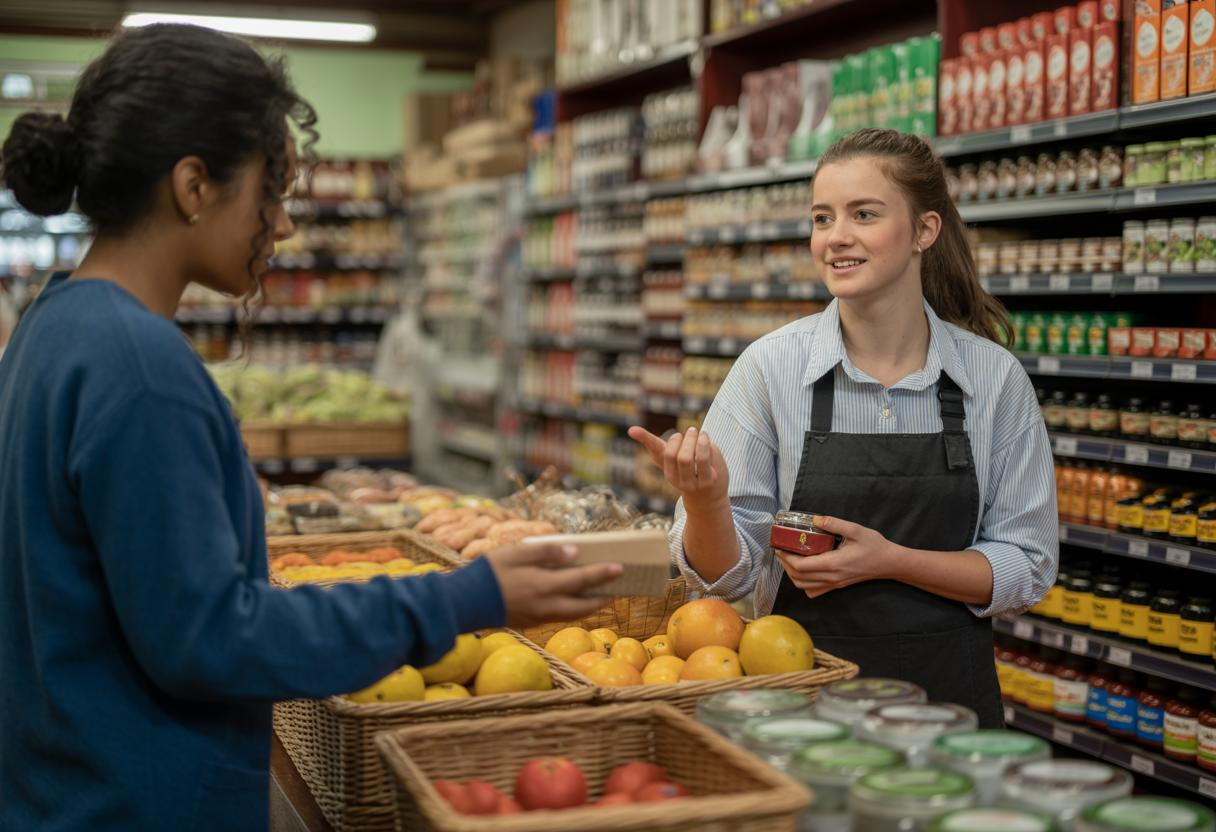In a town where the nearest grocery store is 40 miles away, high school students are running their own market and completely transforming their community’s future. Circle C Market in Cody, Nebraska proves that when young people take control of their local economy, extraordinary things happen beyond anyone’s expectations.
How a student-run store saved a dying town
Cody’s population of just 170 residents faced a common rural crisis: no local grocery access and steady economic decline. But instead of accepting defeat, the community launched something unprecedented in 2013. High school students now operate Nebraska’s only student-run grocery store, generating $250,000 annually while learning real-world business skills.
The straw-bale construction building houses 1,500+ items, with students managing everything from inventory to customer service. Teacher Stacey Adamson notes that traditional ownership would likely fail here, but the school-affiliated model thrives by eliminating traditional labor costs.
What makes this story remarkable isn’t just the store’s success—it’s how this innovation mirrors other creative rural solutions. Just like Wyoming communities finding unexpected revenue streams, Cody discovered that thinking outside conventional business models can generate surprising results.
The unexpected ripple effects transforming everything
Population growth against all odds
While rural Nebraska loses residents, Cody’s school enrollment increased from 140 to 156 students—a 12.8% growth rate that defies regional trends. The store serves as a community anchor, keeping families local and attracting new residents who value innovative education.
In 2024, voters approved bonds for new school facilities, signaling unprecedented confidence in their community’s future. This mirrors how other small towns leverage unique assets for growth, similar to communities that capitalize on distinctive features to drive economic success.
Student transformation beyond academics
Students gain practical skills impossible to teach in traditional classrooms. They master inventory management, financial operations, and customer service while developing soft skills like communication and accountability. Teacher Liz Ravenscroft observes dramatic improvements in student confidence and career preparation.
The hands-on experience particularly benefits students from challenging backgrounds, providing pathways to entrepreneurship and business careers that might otherwise seem unreachable.
The replication challenges other communities face
Circle C’s success required six years of careful planning, USDA grants, and exceptional community cohesion. Failed attempts elsewhere reveal critical factors: dedicated teacher champions, patient capital, and unified community support.
Nebraska lost 30% of rural grocery stores between 2016-2021, making Cody’s achievement even more significant. The model works best in tight-knit communities with strong educational leadership, but struggles in areas lacking this foundation.
The governance challenges mirror those faced by other rural Nebraska communities, where dedicated individuals often wear multiple hats to keep communities functioning.
Essential lessons for rural community survival
Creative partnerships drive sustainability
The store’s success stems from strategic partnerships with Valentine suppliers and integration with educational curricula. This dual-purpose approach—serving community needs while educating students—creates sustainable competitive advantages that pure retail cannot match.
Student involvement as economic strategy
Using students as unpaid workers raises ethical questions, but the educational value justifies the model. Students gain skills worth thousands in training while keeping operational costs minimal enough for rural viability.
Why this model could reshape rural America
Circle C Market demonstrates that rural communities can leverage their greatest asset—young people—to solve economic challenges creatively. The store’s decade-long success proves that innovative education-commerce hybrids can stabilize communities when traditional businesses fail. This isn’t just about groceries; it’s about reimagining how rural America survives and thrives.
